Stroom Invest interviews / curator Laila Hida
At the age of seventeen, Laila Hida moved from Morocco to Paris to study English literature at Sorbonne, as well as communication and journalism. There also arose the deep rooted desire to study cinema; sometime. After twelve years in the French metropolis, Hida decided to go back to Marrakech. Here she founded the project space LE 18, Derb el Ferrane, an multidisciplinary art space with the aim to let people [artists, curators, researchers, the neighborhood] connect, exchange, create and reflect on art and society.

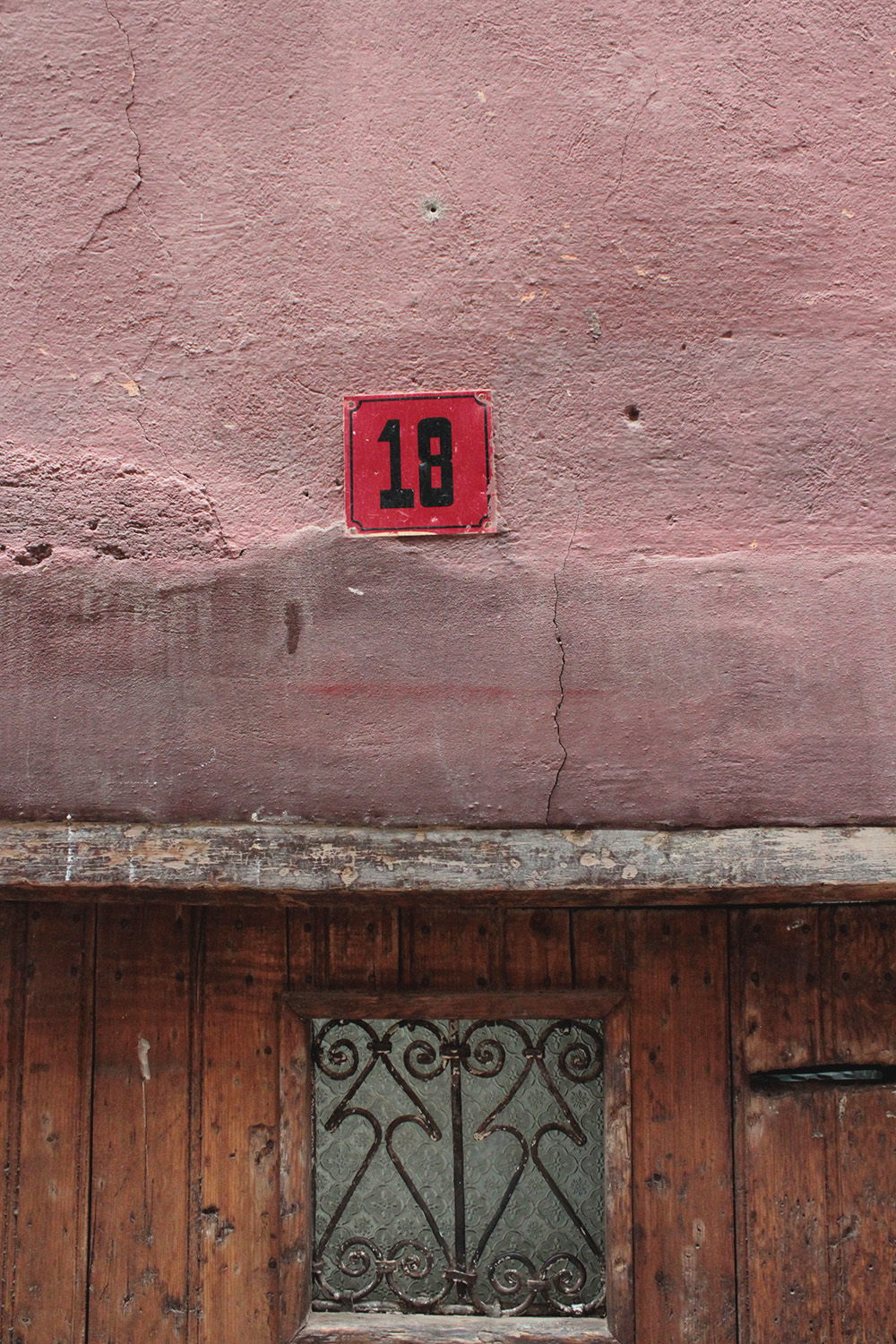
LE 18 opens up dialogue on social issues, as for instance the city space and transformative cultural scene. By bridging imaginary walls, LE 18 avoids conventions and entrenched dogmas constantly, since it’s art’s nature to raise questions: “about our being, our history in the making, our relations to each other’s; our past, our future; about forms of art and dissemination, about art itself, in the sense of what is qualified as art and what is not”, Hida mentions.
In addition to your curatorial practice, you’re also a photographer. Can you tell me something about yourself, as a photographer, a curator - a human being?
I wouldn’t call myself a curator, rather an artist and a maker. I like raw experiences and the way they foster new projects, pieces, photographs, or simply new thoughts and connections. My studies in communication and journalism in Paris did not directly prepare me to the art world. In fact, my first encounter with an artistic practice came through my first job. Back in Paris, I was working as an Art Director assistant and photography producer for a fashion magazine (Mixed). Then I started questioning the fashion industry and the functioning of cultural industries in a broader sense. Not having an academic background nor mindset, I am inclined to be more responsive to my intuitions. So, for instance, as soon as an I idea pops in my mind, I like to discuss it collectively to collect different inputs from LE 18’s team, and namely from Francesca Masoero who is the programs curator or sometimes simply with a friend that has nothing to do with the artistic field.
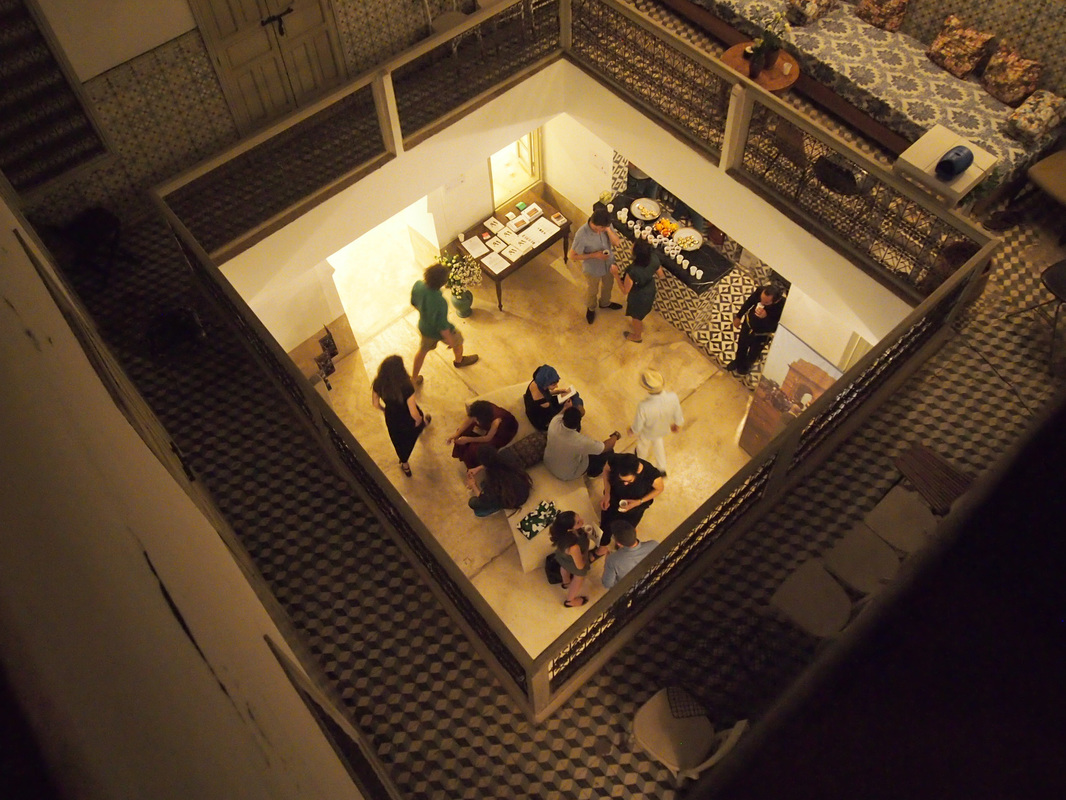
Do you think it is important to position yourself hybrid to become a good curator?
One of the benefits of practicing photography is growing to be a good observer. One starts handling all sorts of choices with care: find the right format, selecting the best language to deliver a message, clearly defining the purpose of an action, etc. That, I guess, is very useful in a city like Marrakech where I live now. A city which is becoming, as time goes, an infinite playground for researching, learning, creating, dreaming, thinking. I am interested in approaching this playground in different ways. It is important for me to position myself as an artist, an entrepreneur and a cultural maker, and to navigate these roles in a way that sometimes create confusion, even for myself. Finally, I guess versatility is a skill to develop when you run a space because it informs your decisions and actions when comes the moment for self-reflexion.
What do you consider the [major] role of being a curator in today’s society?
The most important to me is to set the focus on the context, as a central element and the topic to understand. Context matters. Being a curator is a responsibility vis a vis the artists, the institution and the audience. As a general rule, intelligent proposals succeed in combining forms, narratives, contents and publicity in a novel way; they eventually impact the history of a place. This said, it is the role of a curator to raise topics and trigger genuine conversations between different groups in a manner that activate curiosity and open new perspectives in seeing and thinking the world.
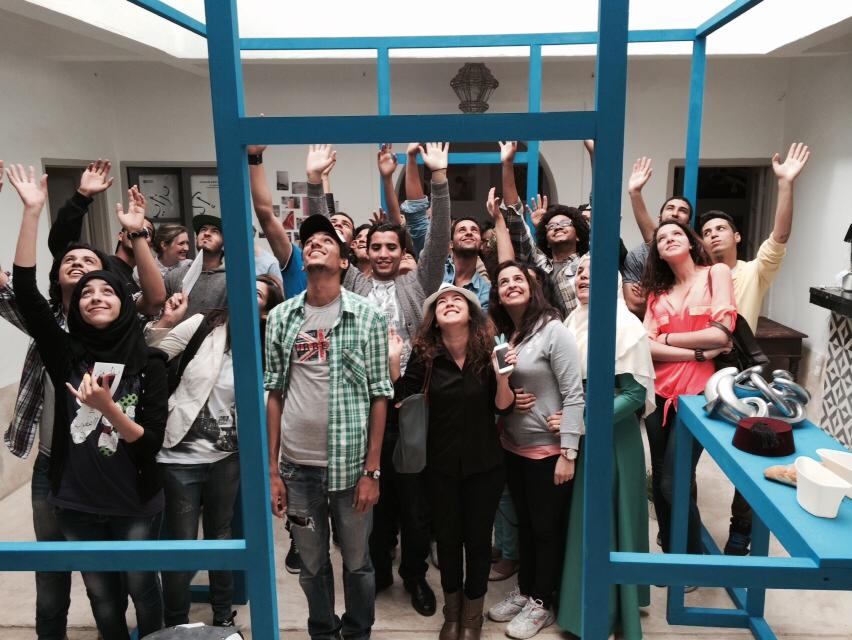
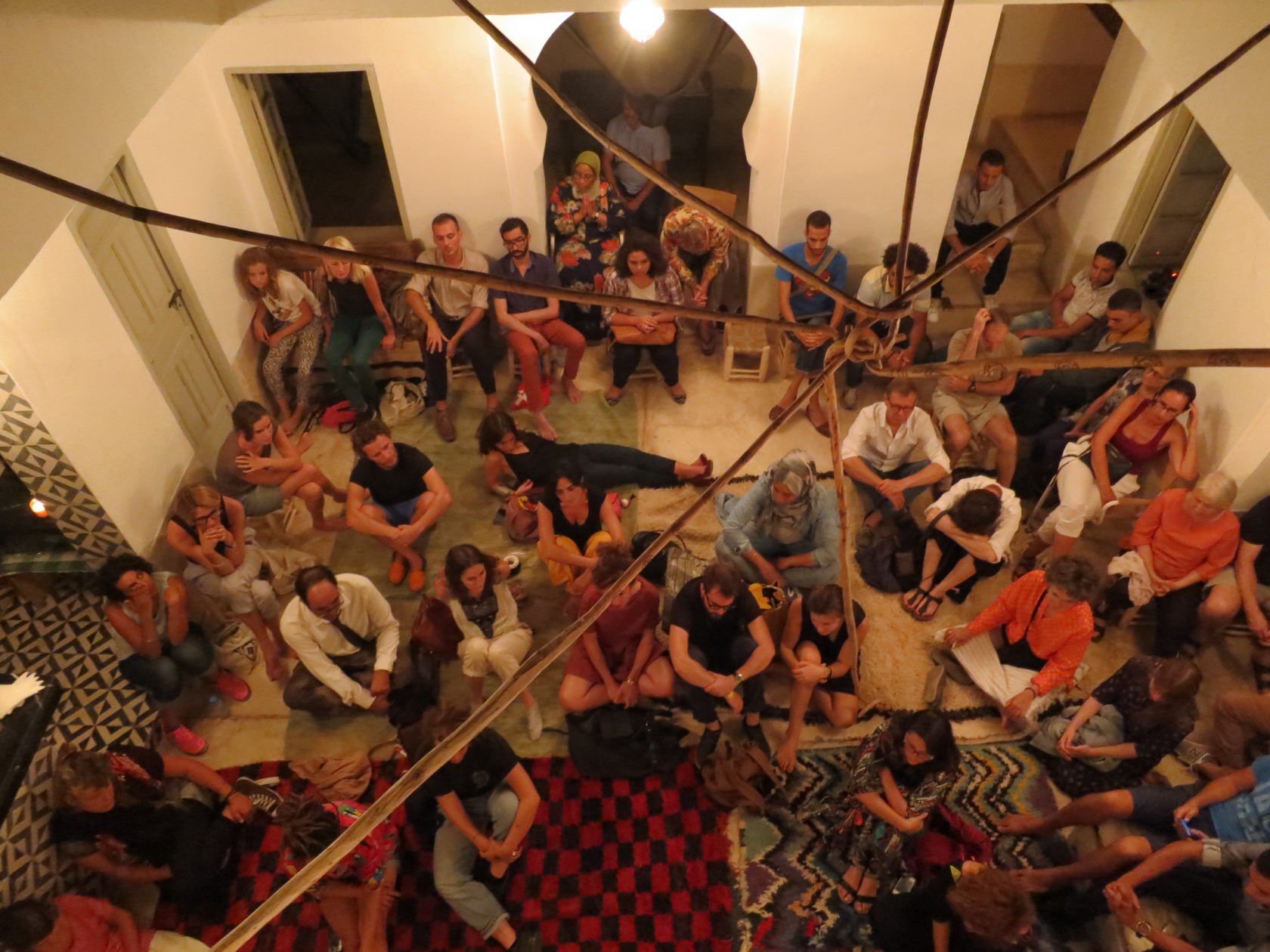
What do you like mostly about ‘the other’, in front of your camera as well as the artists in residence in the space of LE 18?
I haven’t been doing much photography lately since I dedicated a lot of time to LE 18. Nevertheless, it was such an opportunity to be with and around so many artists, to learn from them, to have endless conversations, to partake in their thinking, or even to challenge mine. It has also opened my practice to other mediums. Various discussions have fueled my attention for details, for small scales that reveal important views about how we function, who we are, etc. Sometimes little interactions inform us about the wider system of interactions.
Working at LE 18, a place for meetings, creation, having coffee together and reflect, what is the best dialogue on art you experienced here?
Every dialogue has been thoughtful and expanded the meaning of a small art space in the Medina. For instance, In 2016, during the Marrakech Biennale, we presented an exhibition titled KawKaw co-curated by artist Younes Baba Ali. The project invited five artists from the five Maghreb countries to reflect on the region’s artistic, social and political matters. It was a unique experience to bring together the artists Ali Tnani (TUN), Oussama Tabti (ALG), Hadia Gana (LIB), Mohamed Arejdal (MOR) and Hamedine Kane (MAU), and to engage with our neighboring countries as well as to design an exhibition strongly inspired by a knowledge of the context. It taught us how much small initiatives could strongly move people, in every sense of the word.
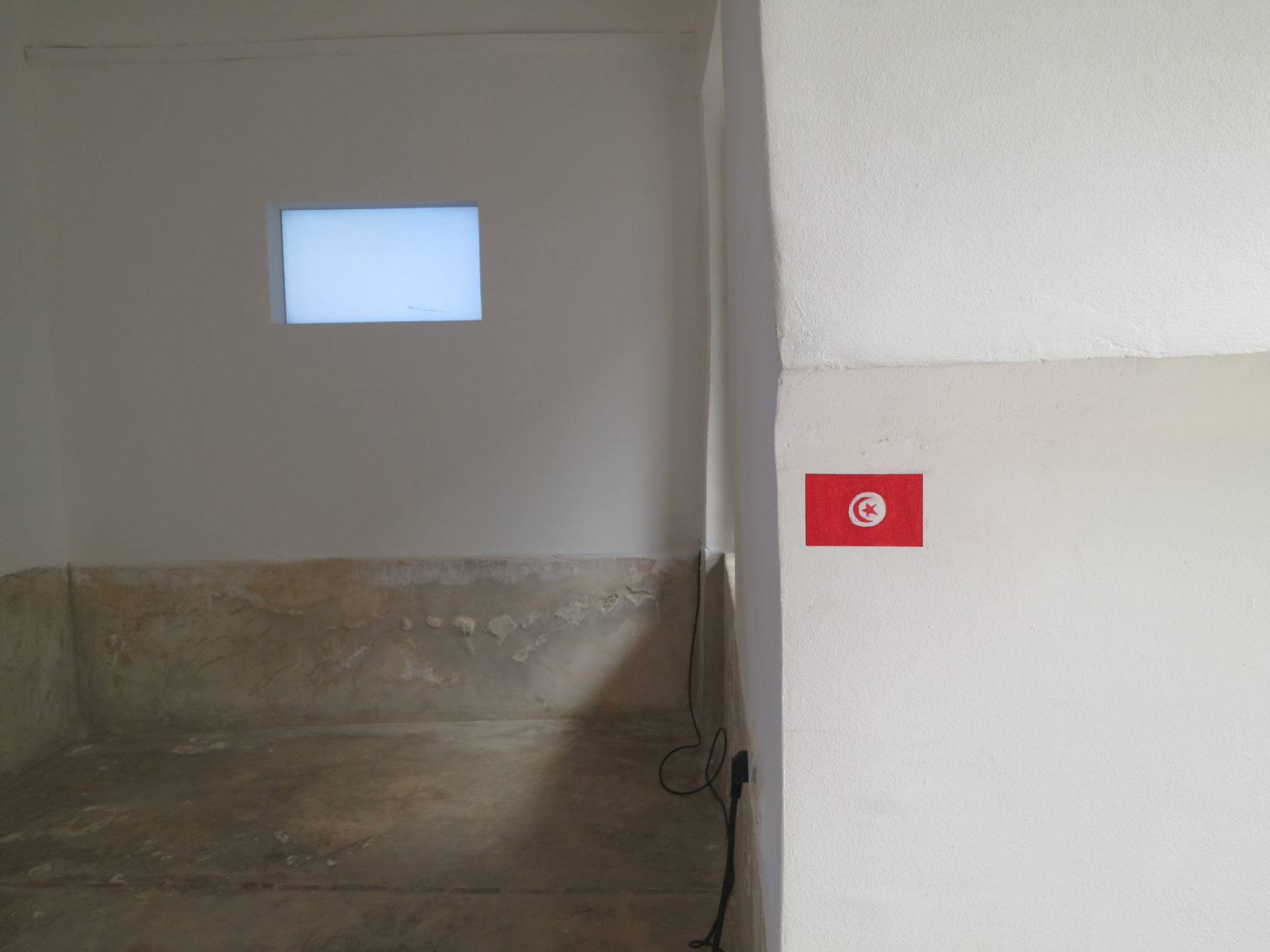
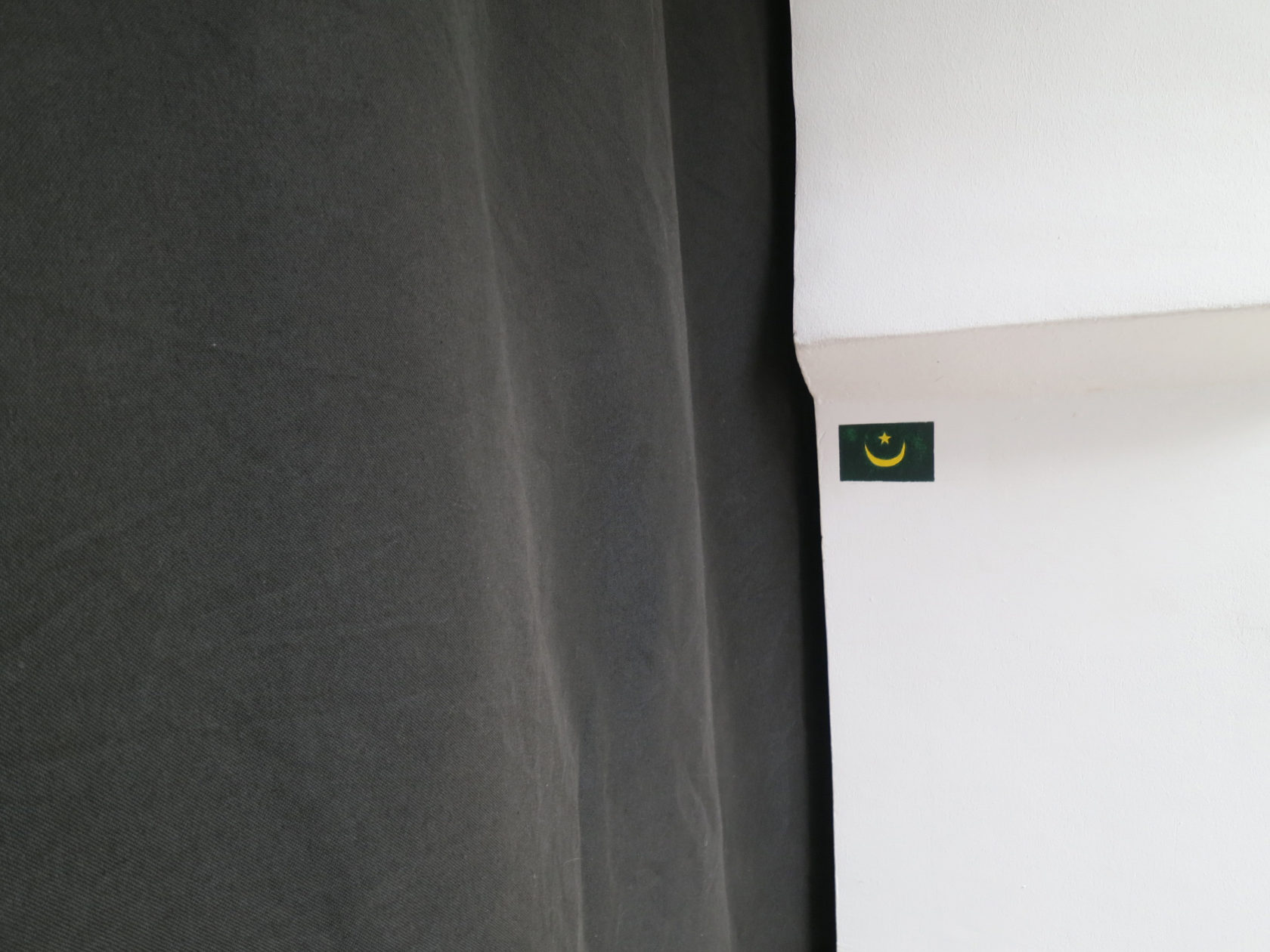
Do you think the works in KawKaw mainly stimulated this movement? How do you think about the concept mobile autonomy and the physical walls of a set space?
We’ve organized a series of talks in the wake of the exhibition to learn about cultural scenes, situations and dynamics of the Maghreb region. We also established the historical links that exist between countries, with the ambition to find a collective understanding of Maghreb, and to set a common ground for exchange between south/south countries. KawKaw, in that regard, has been as major exhibition project because it recalls a time of utopia, the one that marked for instance the Arab Maghreb Union when States projected political, economical and social unity in the region. KawKaw reminded us how urgent it is to workout our relationships — political, economical and social — in order to increase strengthen our voice, and to build sustainability in our interactions with the North. Since then, we systematically design public programs of talks around major exhibitions to engage into a dialogue with the audience in building the cultural fabric of the city.
I think each context generates its forms of autonomy, afterwards backed (or challenged) by its sociopolitical environment. The emergence of a space is always a result of this donnée. For a place like Morocco, autonomy probably conveys a slightly different meaning than the one it conveys in Western countries. The stakes are different. I am not very aware of the concept of mobile autonomy but the physical space is seemingly vital to enable artists to function and work in different contexts and engage with their environment.
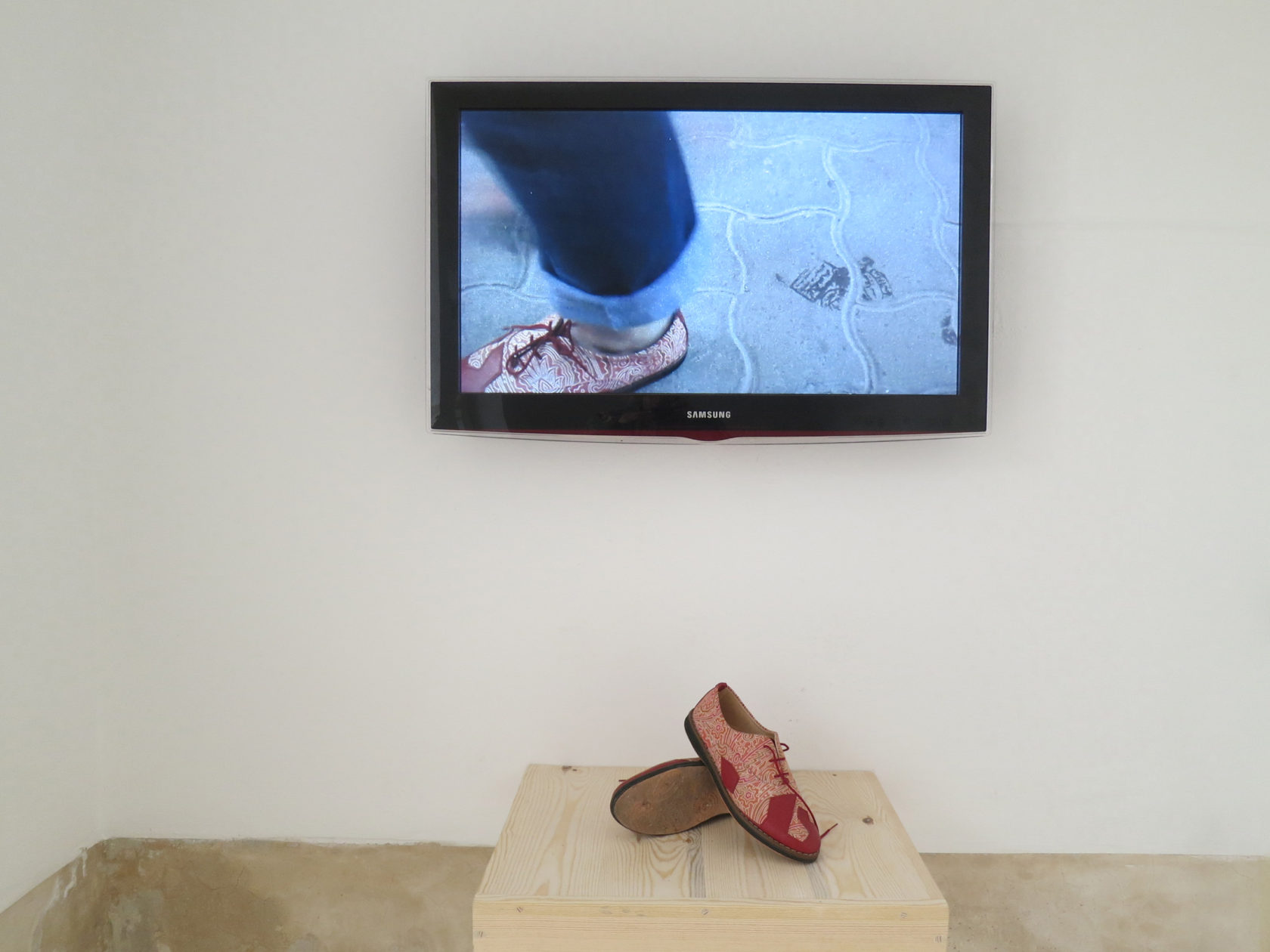
How to act ‘open’ when wondering about the host-guest relationship? How can you interact equally, having the right connection to each other, be really open for new perspectives?
It’s a recurrent question to us and we do not have defined methodology to create the equal situation. However, I believe it depends a lot on each project and we care about artists that have a deep interest in exploring the context and merge with the community and/or be part of a more grounded research undertook by LE 18. It could sound like a hazardous approach, but we are also here to do the proximity work of following up their research and enable them to connect and have enough interaction to build an understanding.
When one operates temporarily from place to place from an intrinsic drive to connect over and over again (I think, this can be a definition of the concept mobility), how do you approach the relationships arising in LE 18? Does it differ from the connections between people in art spaces in Paris or Europe?
Not really, I think everyone is seeking the same experience, i.e. an experience from humans to humans, marked with learning and eventually sharing. In fact, Art is the language shared by people who have decided to look at the world from a different perspective and it is the case in every contexts. LE 18 is like a vessel that offers space for people to have a voice and to connect.
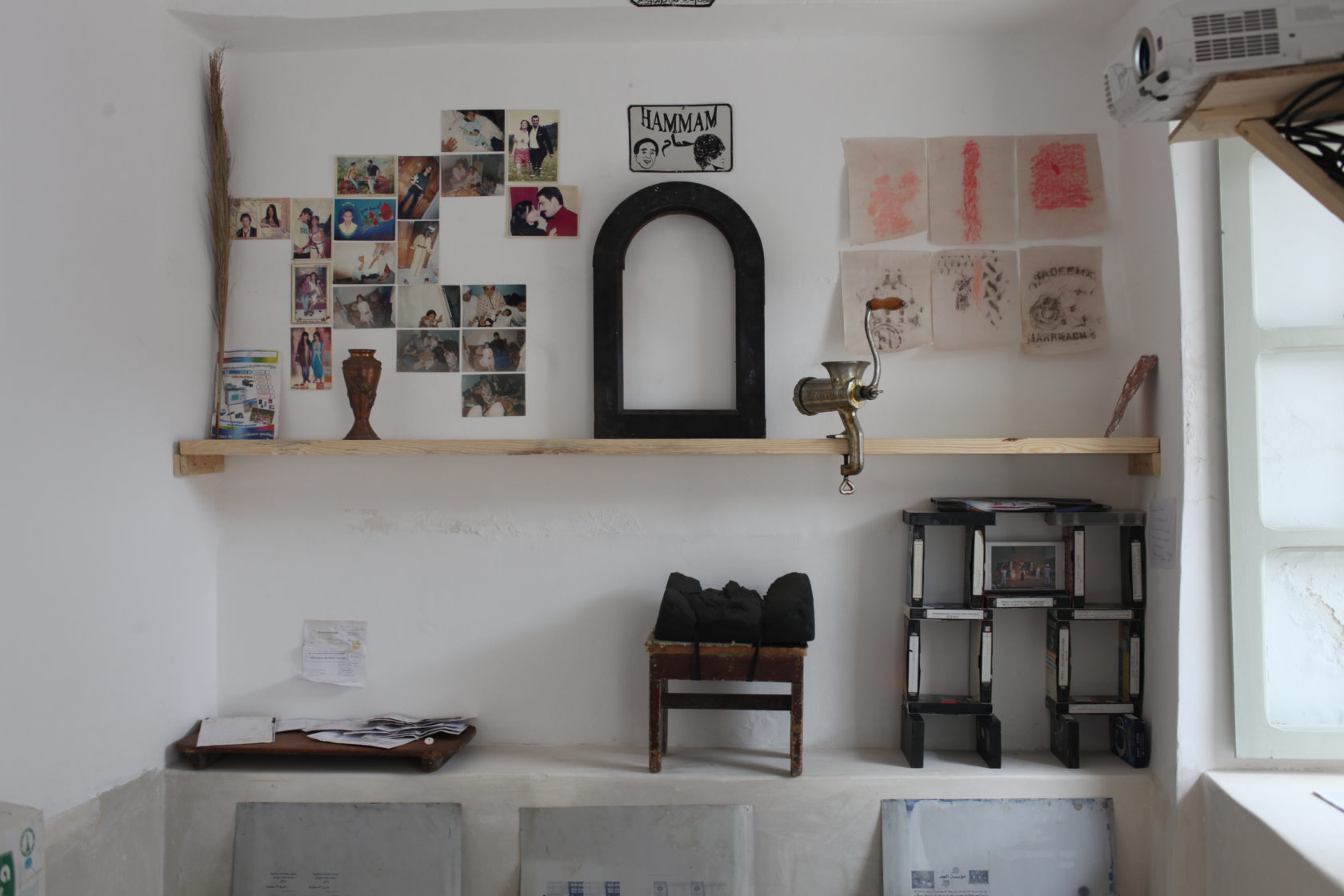

You have lived in Paris for twelve years. Why did you decided to go back to Morocco? And what have you brought with you?
It was nothing premeditated. I just woke up one day thinking ‘I want to leave now’. It was time I guess, but also, I did not have the feeling of doing something meaningful. Even though I was in a constant learning, I felt something was missing. I was missing a holistic view of who I am, in my journey and my work; which became clear when I finally settled in Morocco. I have learned a lot during the past 8 years. Educational, cultural and family background in Morocco does not prepare us to be aware of our power to critically provoke change. This of course is based on my personal experience. The 2011 protest movements have truly changed my perception of the Moroccan citizenship and my views on a young generation that appears more active and self aware than I thought. It reassured me I was in the right place.
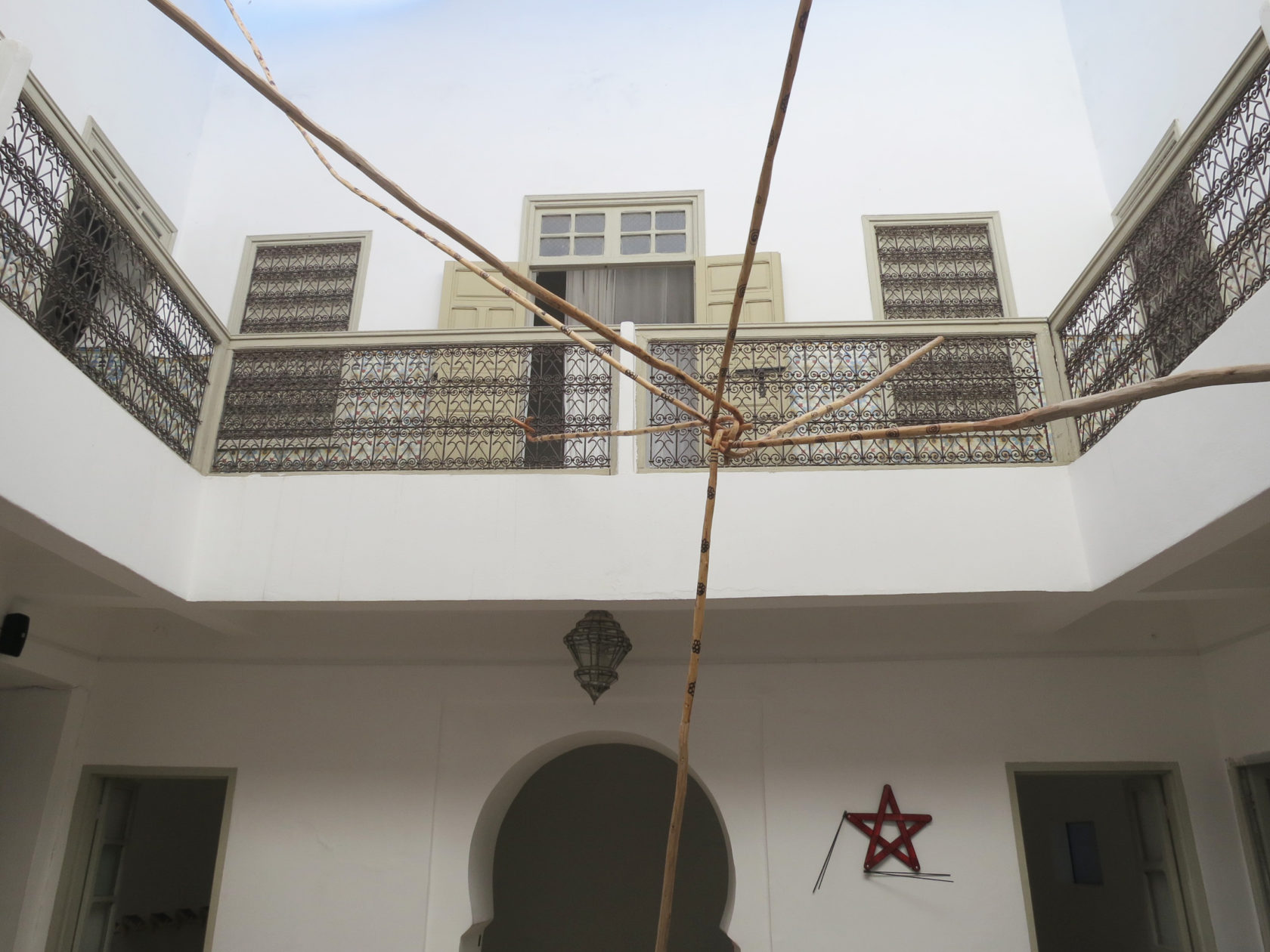
How do you approach the art scene in Marrakech? How do you connect to the city?
Most of my current projects and practice are grounded in Marrakech. At the current moment, I pay attention to the complex relationship between a city partly designed as World Heritage Site and global tourism driven by the laws of a liberal system that allows easy investment and low regulation on Western expats status/situation. Arnakech Project is one good example of how I approach this invisible yet very present element; it is for me a way of unfolding the entangled strings that generate from Marrakech’s encounter with tourism. The famous square of Jamaa Lfna, is the manifestation of these interactions that result from expectations, stereotypes, deep and ancient complexes that mark locals and visitors of the square.
You mentioned Marrakech as an endless playground of possibilities. If you take us to the city for a minute, what does this look like?
It is diverse, it is craving for experiences, it is full of potential and it is growing. Many people foresee the major role Marrakech will play in the near future as a platform for art in Africa at large, in the same capacity as Dakar with its biennal, or Lagos and Addis Ababa. The city will eventually generate forms shaped by its touristy dynamics, alongside a contemporary art system made of galeries, art fairs, hybrid locations for art and hospitality, and the potent quality of its surrounding landscapes. I think, in the next decade we will witness the appearance of models that integrate rurality, as well as forms of integrated economy and autonomous plateformes. But this goes with raising awareness among private and public sector and allowing more investment into culture.
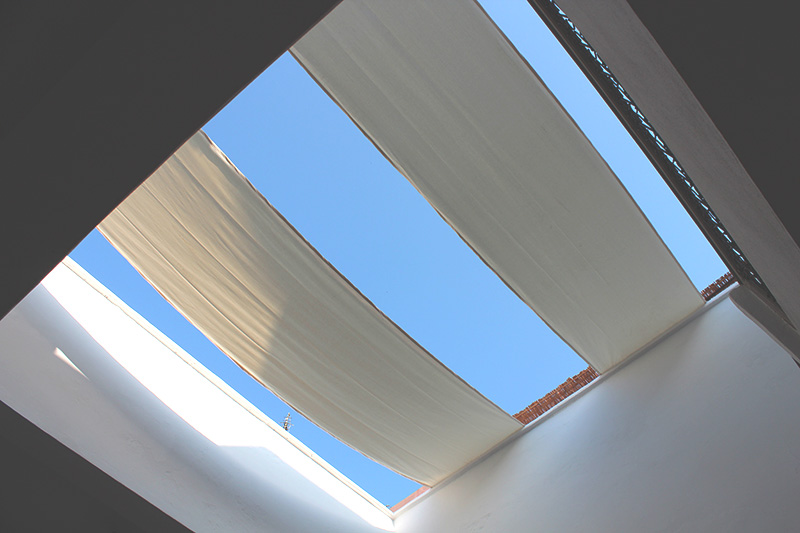

Do you think you will leave Marrakech ever?
I don’t feel the need to leave it now. Instead, I am interested to be more rooted here through my work and my vision, to project myself in the future of this city and to imagine utopias, forms of art and spaces. It is a great opportunity to witness the passing of time in this place and the way it affect its dynamics. This city is an incredible inspiration, as it helps me deploy the meaning of my actions.
How does an ordinary day in your life looks like?
It looks like a marathon !
I split my day very intuitively between moments of self reflection, because I need to be alone in my studio for a few hours or sometimes for the whole day. But usually, once I am out of home, I carry out several actions simultaneously: having skype calls at the wheel, meeting the team at LE 18 on the programs and exhibitions, etc. I very often have to do paper work. For some weird reason this eventually comes with responsibility. Constraints that are less fun to manage would easily evolve into daily routine. At some point of the day, usually in the afternoon, I made it a ritual, to take an hour for coffee, alone or with a friend, in one of Marrakech’s tiniest old cafés to watch people and pause my brain before heading to second part of the day. Lately I would also dedicate few hours every day for a project of publication that is in progress (everything is temporary).
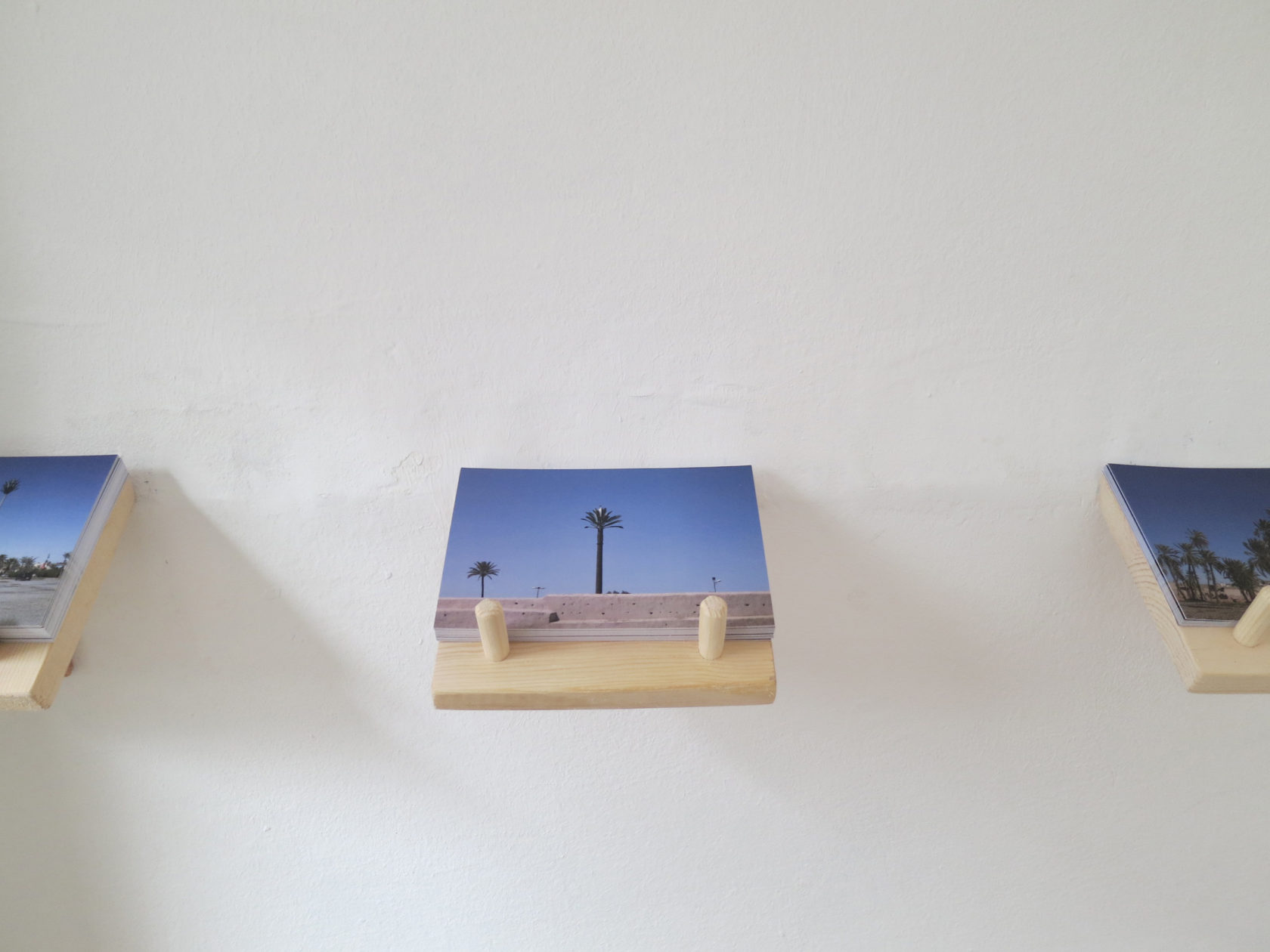
What do you hope to find in The Netherlands, in dialogue with the participating curators and artists?
I hope I will learn other ways of curating, discover more about artists concerns in this region of the world; I hope I will be touched and overwhelmed 🙂
————————————–
In a collaboration between Jegens & Tevens and Stroom Den Haag a series of interviews will be published with (inter)national curators, artists and critics participating in Stroom’s Invest Week 2019.
The Invest Week is an annual 4-day program for artists who were granted the PRO Invest subsidy. This subsidy supports young artists based in The Hague in the development of their artistic practice and is aimed to keep artists and graduates of the art academy in the city of The Hague. In order to give the artists an extra incentive, Stroom organizes this week that consists of a public evening of talks, a program of studio visits, presentations and a number of informal meetings. The intent is to broaden the visibility of artists from The Hague through future exhibitions, presentations and exchange programs. The Invest Week 2019 will take place from 17th to 21th June.